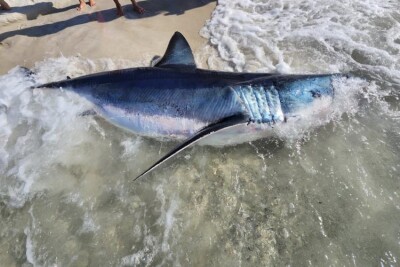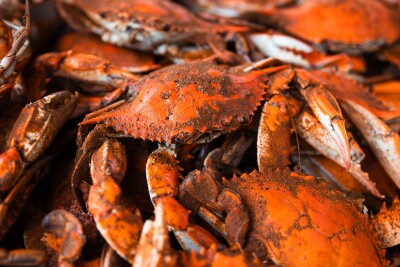Bigger is not always better
Based on U.S. Coast Guard reports
Wear and tear on equipment requires frequent maintenance, repairs and eventually replacement. Worn gear is best replaced with a like piece of equipment. If it is upgraded, the new equipment may be bigger and operate more efficiently, but it could also add significant weight, which can affect the boat's operation.
Even with no significant weight change, increased capacity or strength of equipment — for example, a net that allows for a larger haul — can still affect stability.
In early January, the skipper and crew of three on a 49-foot steel-hulled light boat were fishing for squid about a mile off the southeastern end of Catalina Island in California. The boat, built in 1975, had recently been rigged with a new net.
Around 2 a.m., the crew was hauling back a full net. They had tethered their seine skiff to the opposite side of the vessel to counter the moment of lifting the bag. The haul was estimated at a thrilling 40 to 50 tons of squid, which caused the boat to heel over. The 10 to 15 tons in the hold began to shift and at about the same time, the live squid in the haul rushed the net, adding enough force to pull the vessel over further, flooding the deck and resulting in a quick capsize. The captain and crew were forced into the water.
A last-moment mayday call went out to other fishing boats nearby. One of them was on site in a few minutes and retrieved all four crew from the water without any injuries. A second vessel relayed the mayday call to the Coast Guard. An assist vessel from Catalina arrived to transfer the crew and take them to port for testing. The vessel's EPIRB had also activated and the Coast Guard picked up the signal.
Lessons learned
Although the crew got wet and cold, no one was injured. They were rescued almost immediately. But what would have happened if the other vessels had not been close by? The flooding happened so quickly that the crew members were not able to don flotation devices or survival suits. The results could have been much more serious, so let's look at what went wrong and how it might have been prevented.
The most critical factor in the incident was probably the net. The old net had recently been replaced with a new one that had a breaking strength of at least two times that of the old one. The old net would have broken or parted under a 40- to 50-ton haul, but the new net could have held even more. With the new net, securing the seine boat to the opposite side of the vessel was no longer sufficient to counteract the load. With the squid in the hold shifting, the boat was suddenly at a point of no return. A survey of the vessel and stability instructions could have identified the limits to how large a catch could be hauled, which would help the owner determine what type and size net to use.
Once the vessel was heeled over and water was coming on deck, open hatches and doorways allowed water to pour in and progressively flood the boat.
When the crew was forced into the water as the vessel capsized, they were recovered very quickly by another vessel in the area that heard their call and saw they were in trouble. Without PFDs or survival suits, the outcome of the incident would likely have been tragic if their rescuers had been an hour or two away.
Even though it is not required on a vessel of this size, owners should consider having their vessel surveyed. A stability analysis would identify limitations on loading, catch hauling, and the type and size of equipment that can safely be installed and used. Training for the skipper and crew on the boat's characteristics and operational restrictions would make for safer fishing. More, bigger, and faster is not always better.






